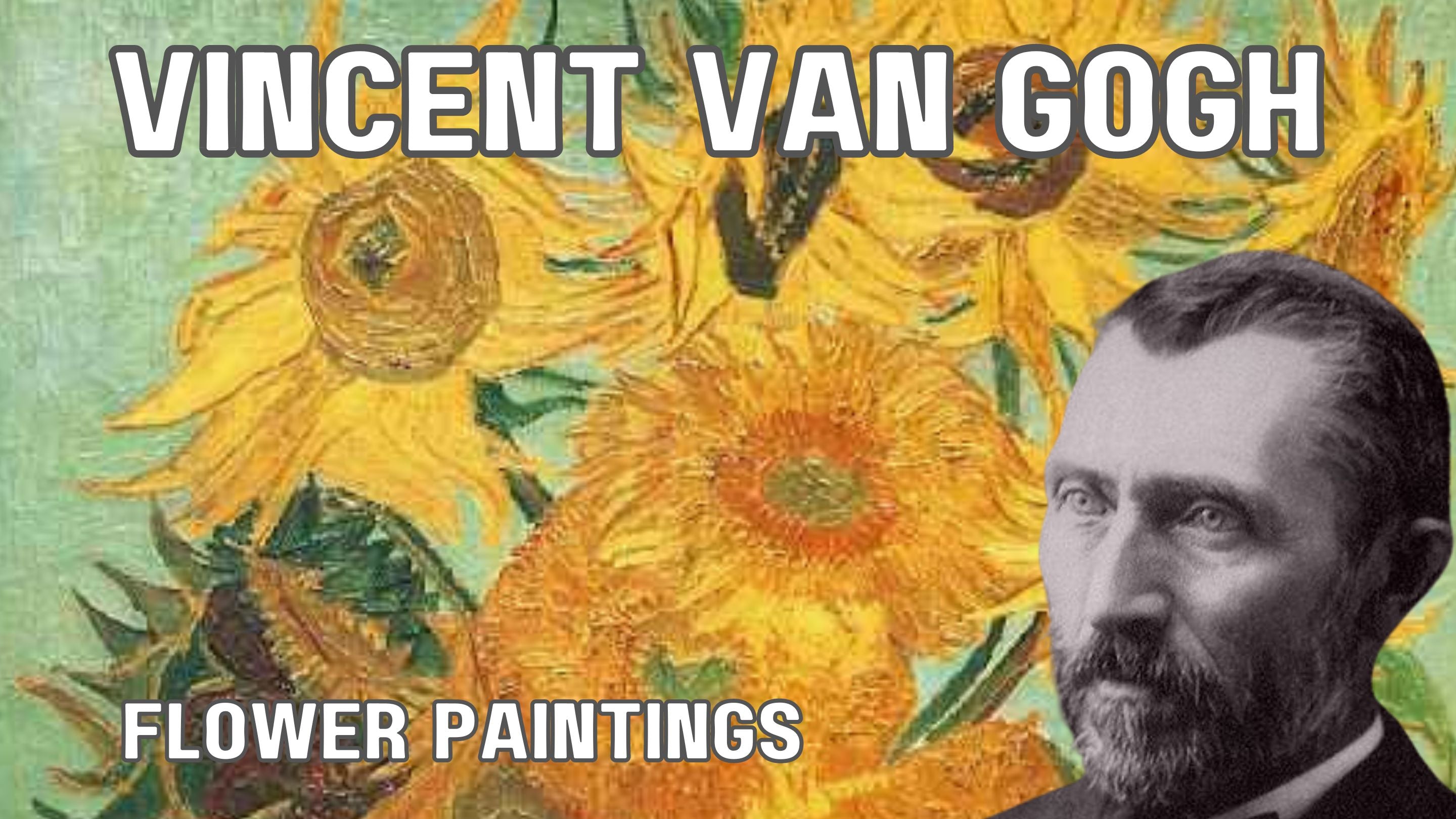Introduction
Vincent van Gogh, the maestro of Post-Impressionism, transcended the canvas with his evocative flower paintings. This exploration delves into the enchanting world of van Gogh's floral masterpieces, dissecting the techniques, symbolism, and the artistic evolution that defines these botanical wonders.
The Blossoming Journey: Early Flower Paintings
Roots of Inspiration
Van Gogh's affinity for nature found early expression in his flower paintings. The "Vase with Honesty" (1884) and "Still Life with Oleander" (1888) mark the genesis of his floral fascination, showcasing delicate blooms rendered with a keen eye for detail, foreshadowing the vibrant tapestry of colors that would define his later works.
A Play of Light and Color
Even in his early flower paintings, van Gogh experimented with the interplay of light and color. The "Sunflowers" series (1888) exemplifies this, with vivid hues dancing on the canvas, creating an immersive experience. These paintings not only capture the essence of the flowers but also lay the groundwork for his later, more expressive style.
The Sunflower Symphony: A Pinnacle of Brilliance
Symbolism in Sunflowers
Van Gogh's iconic "Sunflowers" series stands as a testament to his mastery. The series, including "Sunflowers in a Vase" (1888) and "Vase with Fifteen Sunflowers" (1889), goes beyond mere depiction, delving into symbolism. The sunflower, a recurring motif, symbolizes gratitude, adoration, and the artist's pursuit of enlightenment through art.
Expressive Brushstrokes and Texture
Van Gogh's technique evolved in the "Sunflowers" series, characterized by bold and dynamic brushstrokes. The impasto technique, with thickly layered paint, creates a tactile quality, bringing the sunflowers to life. The juxtaposition of vibrant yellows against textured backgrounds imparts a three-dimensional quality, inviting viewers to feel the warmth and energy of the blooms.
Blossoming Abundance: Flower Paintings from Arles
The Irises and Beyond
In Arles, van Gogh's flower paintings reached new heights with the mesmerizing "Irises" (1889). The irises, rendered in various shades of blue and purple, symbolize hope and inspiration. The series captures the artist's fascination with the endless possibilities of nature, showcasing a mastery of color and form.
The Almond Blossom Symphony
The "Almond Blossom" series (1890) is a celebration of life and rebirth. Painted as a gift for his newborn nephew, the blossoms represent the cycle of life and the artist's newfound joy. The delicate pink and white blossoms against a blue sky showcase van Gogh's ability to infuse tranquility into his vibrant compositions.
Van Gogh's Garden: Symbolism and Beyond
Beyond Aesthetics: Symbolic Meanings
Van Gogh's flower paintings go beyond aesthetic allure, laden with symbolic meanings. Whether it's the profound symbolism of irises or the joyful celebration of almond blossoms, each painting tells a story. The "Rosebush in Blossom" (1889) captures the duality of beauty and thorns, symbolizing life's complexities.
The Influence of Japanese Art
Van Gogh's flower paintings were influenced by Japanese ukiyo-e prints, evident in works like "Flowering Plum Orchard" (1887). The flattened perspectives and vibrant colors borrowed from Japanese art added a unique dimension to his floral compositions, showcasing the artist's ability to assimilate diverse influences into his own distinctive style.
Frequently Asked Questions
FAQ 1: Why did Van Gogh paint so many flower paintings?
Answer: Van Gogh found solace and inspiration in nature, and flowers became a subject of endless fascination. The diversity of blooms allowed him to explore a wide range of colors and forms, making them a perfect canvas for his evolving artistic expressions.
FAQ 2: What is the significance of sunflowers in Van Gogh's work?
Answer: Sunflowers held profound symbolic meaning for Van Gogh. They represented gratitude, adoration, and his pursuit of artistic enlightenment. The "Sunflowers" series, in particular, is a visual ode to the transformative power of art.
FAQ 3: How did Van Gogh's technique change in his flower paintings?
Answer: Van Gogh's technique evolved from detailed depictions in early works to bold, expressive brushstrokes in later pieces. The "Sunflowers" series marked a turning point, introducing dynamic textures and vibrant color contrasts that became hallmarks of his flower paintings.
FAQ 4: What role did symbolism play in Van Gogh's flower paintings?
Answer: Symbolism played a pivotal role in van Gogh's flower paintings. Each bloom held specific meanings, adding depth and nuance to the compositions. The artist used flowers as a language to convey emotions, ideas, and his profound connection with nature.
FAQ 5: How did Japanese art influence Van Gogh's floral compositions?
Answer: Van Gogh was inspired by Japanese ukiyo-e prints, adopting elements like flattened perspectives and vibrant colors. This influence is evident in works like "Flowering Plum Orchard," where he seamlessly incorporated Japanese aesthetics into his own unique style.
Conclusion
Vincent van Gogh's flower paintings are a testament to the transformative power of art and nature. From the early explorations of delicate blooms to the vibrant symphonies of sunflowers and irises, each petal tells a story. Beyond aesthetic beauty, these floral masterpieces encapsulate the artist's emotions, symbolism, and the perpetual evolution of his genius.
Prints and Canvas Panels
Prints and canvas panels of the curated selection of Van Gogh self portraits are available in a wide range of sizes.
Related Articles
Post Impressionism











